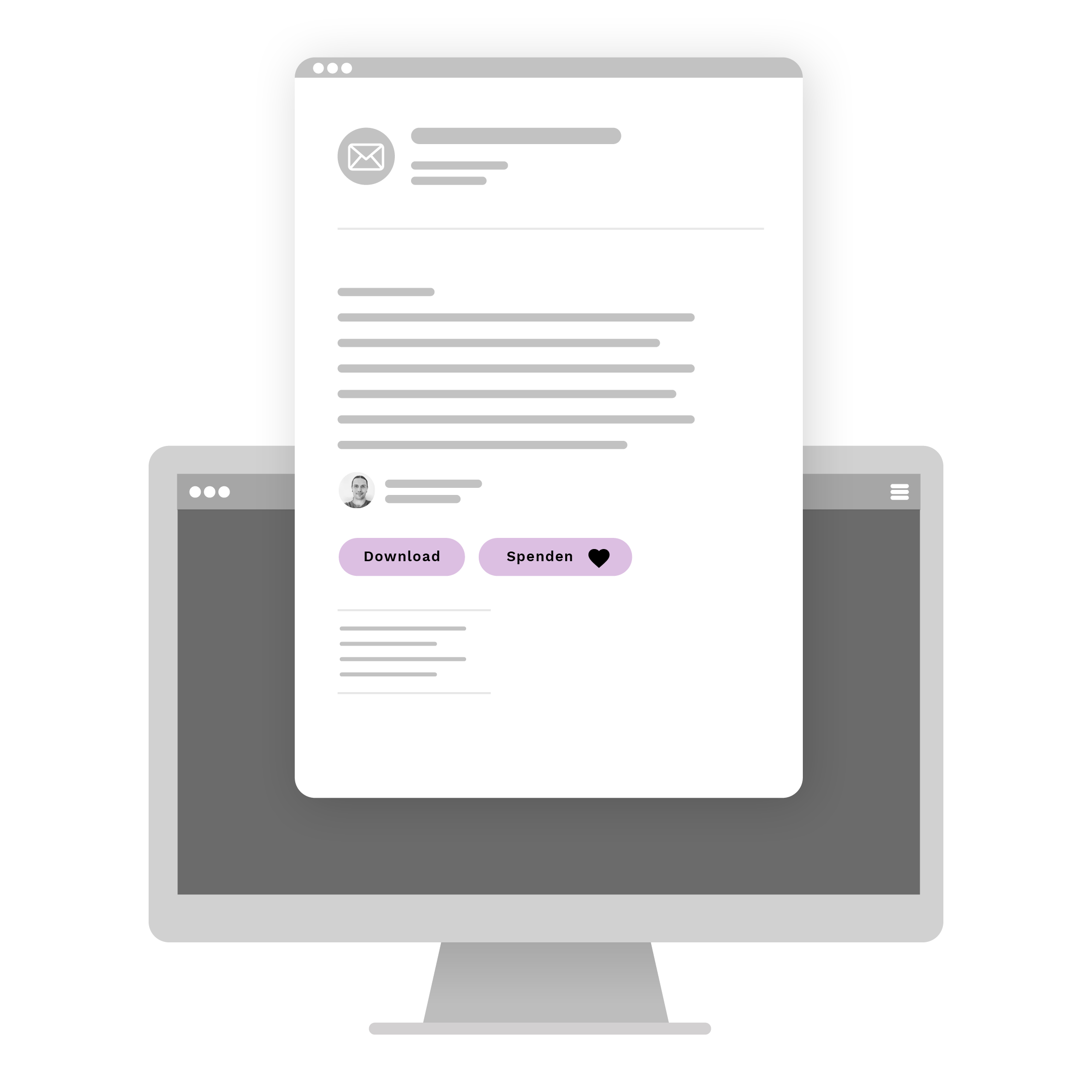Donation receipt goes digital – this is how it works!

Why digital donation receipts are essential for organisations
In an increasingly digitalised world, new opportunities to make the donor experience even more unique are also constantly opening up in the nonprofit sector. In the meantime, digitalisation has also reached the area of financial management. For some time now, donation receipts can be issued completely digitally and transmitted electronically. We see digital donation receipts as a must-have with which non-profit organisations can (still) position themselves as pioneers and satisfy the needs of their donors. This cost-effective solution promises more efficiency, transparency and sustainability in the donor experience. Sounds good? We explain how it works!
Relief for donor and organisation
More and more people are working digitally, which changes their needs, but also their expectations. For nonprofits, it is important to constantly think about new digital solutions and to rethink their strategy at an early stage. While nonprofits are currently still very attached to sending letters, donors often perceive them as a disruptive factor: They have to be opened, scanned and filed digitally. It also happens again and again that donors lose their certificates and have to apply for them again. For nonprofits, this means extra work in terms of time, costs and administration. Sending donation receipts digitally is therefore a relief for both donors and organisations – and of course for the environment! But beware: an individual approach is crucial when implementing it. The digital donation receipt should be seen as an additional option and should not completely replace postal delivery. The digital version is worthwhile especially for younger or predominantly digitally working groups of people. For other target groups, supplementing the letter mailing can also be a good option. It’s worth testing!
Our clever hack on top: View the donation service as a holistic journey! For example, the digital donation receipt could include an appeal for a donation or an upgrade to a permanent donation. Here, it makes sense to track the commitment. If the download or donation does not materialise, it should always be followed up offline.
A service for donors
Digital donation receipts are a service for donors. This is why special attention must be paid to the user experience during implementation, because it should be comprehensible and intuitive on both desktop and mobile devices. This means that emails and landing pages should be coordinated and complement each other. Donors can access their digital donation receipts via a download link or receive them by email as a PDF attachment. In the latter case, it must be taken into account that such emails are often classified as spam. With regard to the data, it must be ensured on the one hand that the donation receipt can only be viewed by the person making the donation, and on the other hand that the data it contains is 100 per cent correct. In addition, digital donation receipts must meet certain requirements.

A digital donation receipt must meet these requirements
Donation receipts must also meet certain requirements in digital form. Both formal and content-related requirements must be taken into account. We have compiled a small checklist for Germany and Switzerland:
Formal requirements Germany
- Current/valid proof of non-profit status
- Facsimile signature of an authorised person (board of directors, management)
- Registration of electronic dispatch with the tax authorities: As a rule, permission is granted by the tax authorities. However, this is subject to the condition that the data flow in the organisations demonstrably complies with the principles of proper accounting and documentation.
- Write-protected unchangeable file (electronically secured PDF is sufficient)
Content requirements Germany
- Designation of the type of confirmation:
- Confirmation of donation of an individual donation
- Collective acknowledgement: In the case of a collective confirmation, the total period of receipt of the donation (usually a calendar year) must be indicated, the total amount as well as the individual donations, which as a sum add up to the total amount.
- Personal data: Full name and address
- In the case of a corporate donation: Company name and address; address must correspond to the address of the company in the commercial register.
- Tax-privileged purpose: Indication of whether the donation is a donation or a membership fee.
Formal requirements Switzerland
- Current/valid proof of non-profit status (issued by the canton)
- Facsimile signature of an authorised person (board, management)
- Write-protected unmodifiable file (electronically secured PDF sufficient)
Content requirements Switzerland
- Designation of the type of confirmation
- Confirmation of donation of an individual donation
- Collective acknowledgement: In the case of a collective confirmation, the total period of receipt of the donation (usually a calendar year) must be indicated, as well as the total amount
- Personal master data: Full name and address
- In the case of a corporate donation: Company name and address
Let’s get digital
We would not recommend anything whose success we had not already measured ourselves. We successfully implemented the first version of the digital donation receipt with Caritas Switzerland. As experts, we know exactly what organisations need to consider when implementing – so let’s get digital! Whether as a one-off email to a very dedicated target group or as a cross-channel journey: getunik supports the development of a well-rounded concept for sending the first as well as all further donation receipts. In doing so, we ensure a smooth technical setup: from the creation of the PDF to the generation of the links and landing pages to the sending of the email. With our specially designed setup, we can ensure a successful approach. Let’s go!
fusion_global=”3696″]
